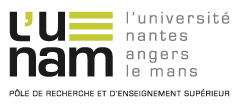Long‐Term Nitrate Trajectories Vary by Season in Western European Catchments
Résumé
Human alteration of nutrient cycles has caused persistent and widespread degradation of water quality around the globe. In many regions, including Western Europe, elevated nitrate (NO3-) concentration in surface waters contributes to eutrophication and noncompliance with environmental legislation. Discharge, NO3- concentrations and the vulnerability of the aquatic ecosystems to eutrophication often exhibit a distinct seasonality. Understanding spatial patterns and long-term trends in this seasonality is crucial to improve water quality management. Here, we hypothesized that NO3- concentrations during high-flow periods would respond faster to changes in nutrient inputs than low-flow concentrations because of greater connectivity of shallow diffuse NO3- sources with the river network. To test this hypothesis, we compiled long-term NO3- and discharge time series from 290 Western European catchments. To characterize the long-term trajectories of seasonal NO3- concentration, we propose a novel hysteresis approach comparing low- and high-flow NO3- concentration in the context of multi-decadal N input changes. We found synchronous winter maxima of NO3- and discharge in 84% of the study catchments. However, contrary to our hypothesis, there were surprisingly diverse long-term trajectories of seasonal NO3- concentration. Both clockwise (faster high-flow NO3- response) and counterclockwise hysteresis (faster low-flow NO3- response) occurred in similar proportions, potentially due to a high complexity in the underlying processes. Spatial variability of seasonality in NO3- concentration across the catchments was more pronounced and better predictable than its long-term variability. This work demonstrates the value of seasonal and inter-annual hydrochemical analysis and provides new tools for water quality monitoring and management.
| Origine | Fichiers éditeurs autorisés sur une archive ouverte |
|---|



